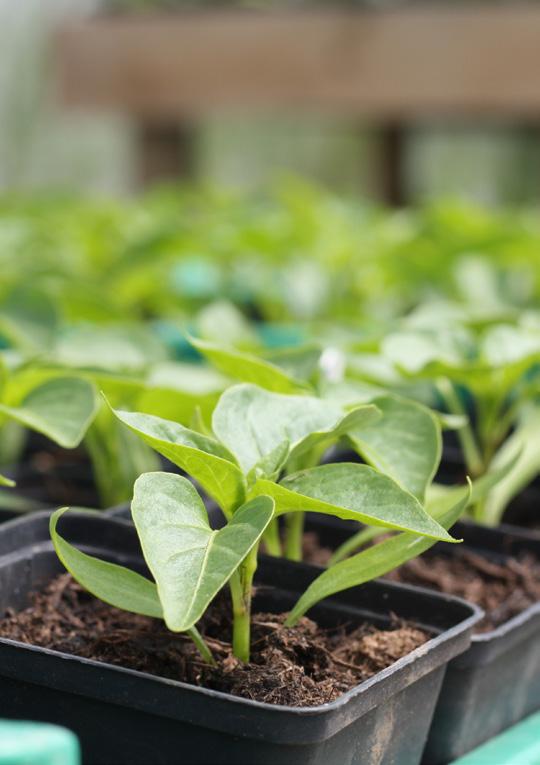
18 minute read
Buying blind – the market’s no-questions-asked approach to global commodities trade
‘Supply chain interventions, which include certification schemes and zero-deforestation commitments that aim to produce environmentally and socially beneficial outcomes, are increasingly common, but evidence on their efficacy is scarce. […] The agreements could be made more effective by tracking cattle movements between properties and expanding monitoring to include all properties in the supply chains, as well as ensuring that all slaughterhouses monitor.’ 1
Jennifer Alix-Garcia and Holly Gibbs, Global Environmental Change November 2017 If companies do not know who is producing the commodities they use or trade, or where those producers operate, they cannot know whether the producers are operating responsibly or destroying forests or other ecosystems. But the environmental stakes are too high for such ignorance. Given the urgency of the climate and nature crisis, consumer goods companies (including, but not restricted to, those in the food sector) must adopt a zero-tolerance approach to commodity sourcing as part of a root-andbranch transformation of their business model. They must assume high-risk commodities from untraced or undisclosed sources are driving deforestation and ecosystem conversion, and exclude them completely from their supply chains along with goods from identified sources that their scrutiny shows to be involved in such destruction. They must also suspend trade with suppliers that are shown to be in any way involved with deforestation or ecosystem conversion, regardless of whether the specific items they are purchasing are affected.
In early 2019, Greenpeace International issued a multi-commodity transparency challenge. More than 50 traders, retailers, producers and consumer goods companies were asked to make their supply chains
23 March 2019, Formosa do Rio Preto, Brazil, 11°20’59.88” S 46°24’38.76” W: Soya plantation in the Estrondo estate – Greenpeace Brazil documented violence against traditional Cerrado communities within the estate, where Bunge and Cargill both have silos. ©Victor Moriyama/Greenpeace
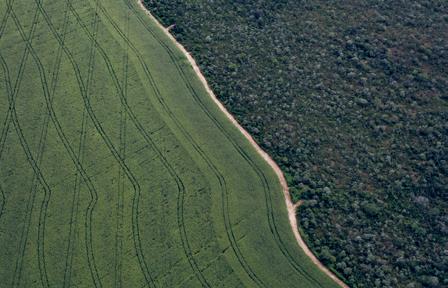
Below: On 23 July 2020, Dave Lewis informed Greenpeace UK that 100% of the soya in the animal feed used to produce Tesco’s poultry and pork was ‘certified deforestation free’. Four days later, his campaigns director clarified that just 1% was from a segregated supply chain while some 69% was ‘Book & Claim’ – a system of credits with essentially no segregation or monitoring of the product.
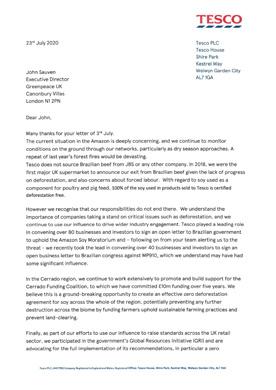
for cattle, cocoa, dairy, palm oil, pulp/paper and soya products transparent, including disclosing the names of all the producers to which they had connections, in order to show what progress they had made towards eliminating any links to deforestation. 2
Not a single one of the companies contacted was able to demonstrate meaningful effort to eradicate deforestation from its supply chain. The majority simply declined to disclose their suppliers, citing reasons of commercial confidentiality. 3 A handful of companies did choose to disclose some or all of their suppliers; however, the information they disclosed revealed significant failings in the implementation of their corporate ‘no deforestation’ commitments, either showing the continued presence of problematic producers in their supply chains or, where only direct suppliers were disclosed, revealing suppliers with documented links to such producers.
For example, soya is the second most significant driver of global deforestation after beef, 4 and about 90% of it is used for animal feed. 5 Yet not a single company contacted by Greenpeace International was able to demonstrate that it was tracking the full amount of soya consumed as animal feed in its supply chain – including by meat and dairy producers or their business customers – let alone whether the supply of soya-based animal feed embodied in its supply chain was contributing to forest destruction. At best, companies were estimating their consumption of soya for animal feed on the basis of industry averages – and this only when challenged by Greenpeace International. Palm
Dave Lewis, CEO of Tesco. ©Tesco

oil and its derivatives are also a growing component of animal feed, 6 yet companies were again unable to calculate the palm oil consumption embodied in their supply chains. A similar exercise carried out by Greenpeace UK in September 2019 yielded comparable results – a challenge to 23 food sector companies to demonstrate that the soya used as animal feed in their meat and dairy supply chains was not driving deforestation revealed that none of them had full knowledge of the amount of soya embodied in their supply chains or were able to trace it to farms that can be independently verified as deforestation-free at the group level. 7
In other words, when it comes to the use of high-risk commodities in animal feed, downstream companies appear to know neither the volumes they use nor the details of the producer groups from which they source. Although animal feed accounts for a significant share of manufacturers’, retailers’ and fast food companies’ deforestation footprints, it seems such companies have yet to enforce their ‘no deforestation’ commitments.
At the same time, it must be acknowledged that the failure to expose the scale of industrial meat’s contribution to the climate and nature emergency is not the fault of downstream companies alone. Producers themselves are ignoring civil society’s demand for transparency, while governments are failing to hold the sector to account by insisting on traceability and effective due diligence, as the following section shows.
‘I wanted to quickly come back to you on the question regarding certification. Our latest reported progress (2019) covers all our whole animal protein products, which now use Book & Claim Credits and Mass Balance. In line with our zero deforestation soy transition plan, this does not yet include animal protein ingredients (including pork and poultry) which we hope to cover this year.’
Tesco spokesperson, 27 July 2020
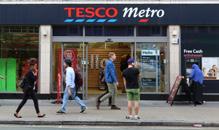
Where’s the beef? – how lack of transparency enables cattle laundering
July 2019: Screenshot of Facebook social media post shows JBS-branded livestock truck reportedly being used to collect cattle from a farm that has been embargoed.
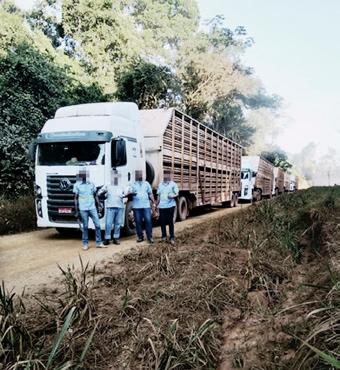
The deforestation impact of the beef industry is felt most severely in South America. 9 The sector is one of the major contributors to deforestation in the wider Amazon region, with cattle ranchers reportedly responsible for 80% of land clearing in every country with Amazon forest cover. 10 The industrial meat sector in South America gets away with the environmental and human rights abuses laid out below because of a lack of governance, due diligence and transparency. Laws and regulations governing the activities of producers are inadequate and poorly enforced, while record-keeping requirements and accessibility of official records are insufficient to enable products (whether meat or feed grains) to be traced to source. These deficiencies are exacerbated by the reluctance of many major meat processors and commodities traders to scrutinise their own supply chains adequately or to publicise the results of such scrutiny. When pressured to act, industry tends to do the bare minimum to satisfy the demands of lawmakers or civil society, while continuing to take advantage of weak governance.
Looking specifically at Brazilian cattle supply chains, the lack of transparency and traceability poses a key obstacle to ending the industry’s role in driving the illegality, deforestation and human rights abuses detailed below. This shortfall is particularly problematic in two areas: 1. Land tenure: The lack of a comprehensive public national database of legally verified property boundaries (ie a land register) is a profound barrier to civil society efforts to link deforestation, fires or other legal violations to specific properties or owners.
2. Cattle movement: A large proportion of cattle in
Brazil move between farms over the course of their lives, meaning that indirect suppliers (farms that have supplied cattle, directly or indirectly, to the farm from which the slaughterhouse ultimately purchases them) are a significant feature of slaughterhouses’ supply chains. 11 According to Holly Gibbs, Associate
Professor of Geography and Environmental Studies at the University of Wisconsin–Madison, ‘almost all farms buy from another property. The estimate ranges from 91–95% [of all farms].’ 12 There are multiple stages in the standard four-year production cycle of Brazilian beef, from birth to slaughter, as a result of which cattle often spend time on multiple properties before arrival at the slaughterhouse. 13
Animals may be bred on one farm and then reared on an intermediary farm before arriving at a final feedlot for fattening.
9 May 2009, Fazenda Espírito Santo, Xinguara, Pará, Brazil. ©Marizilda Cruppe/EVE/ Greenpeace
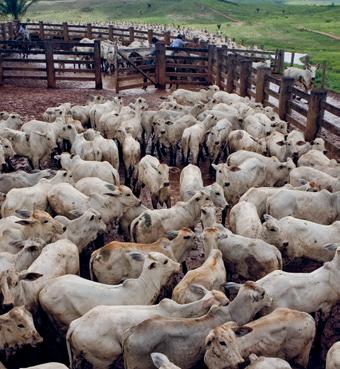
‘Cattle often spend time on multiple properties prior to slaughter, and ranchers can raise and fatten cattle on noncompliant ranches without a CAR [see page 18] or with recent deforestation, and then move the animals to a compliant property before sale to the slaughterhouses (“laundering”). Cattle laundering may also happen through “middlemen” who buy cattle from many producers, including those with noncompliant properties, and then sell to slaughterhouses through their own compliant property. During field surveys, ranchers reported that such laundering is a common and accepted practice, and pointed to the fact that it is not prohibited by the agreements. “The cows are not embargoed, only the land” was a common sentiment. Cattle produced on ranches with recent deforestation could also be sold to nearby slaughterhouses that do not have monitoring systems, allowing the deforestation to “leak” into these unregulated supply chains.’ 8
Holly Gibbs et al, Conservation Letters April 2015
However, Brazil does not have a universal national system to track individual cattle – unlike the EU, for example, where individual cattle need to be fitted within 20 days of birth with ear tags bearing a unique identifying number and identifying the animal’s herd of origin. Together with ‘passports’ issued by EU governments, these tags ensure full traceability of individual animals throughout their lives, including all movements, changes of ownership and passages through cattle markets. 14 The nearest Brazil comes to this is the System of Identification and Certification of Bovine and Bubaline Origin (SISBOV), coordinated by the Ministry of Agriculture, Livestock and Supply (Ministério da Agricultura, Pecuária e Abastecimento; MAPA), which certifies fewer than 0.5% of farms with more than 50 head of cattle. 15
SISBOV certification is mandatory for producers supplying beef for export to countries demanding traceability (including the EU) but voluntary for producers dealing with other markets. 16 This system is supposed to guarantee traceability throughout the supply chain: 17 cattle that are born on a SISBOV farm must be registered and eartagged by 10 months of age, and cattle purchased from a non-SISBOV farm must be registered and ear-tagged within 30 days of arrival on a SISBOV farm. No cattle may be moved off a SISBOV farm without being registered and ear-tagged. 18
However, the critical flaw in the system is that in the case of animals born on a non-SISBOV farm, no information at all is recorded about their history prior to their arrival at a SISBOV farm. Moreover, the system does not require even the certified farms themselves to refrain from deforestation. 19
The SISBOV system aside, data recording the movements of cattle in Brazil is fatally compromised by the fact that individual animals are not identified. This, coupled with the fact that the data that is recorded is not readily accessible to the public in a comprehensive and usable format, makes it virtually impossible for third parties to trace animals from their origins to the slaughterhouse. These deficiencies of traceability and transparency create opportunities for animals bred, raised or fattened on farms engaging in illegal or destructive practices to enter the supply chain, with the almost universal – and perfectly legal – movement of cattle from farm to farm, as described above, being used as cover to ‘launder’ animals into farms not associated with such practices.
‘In the case of indirect suppliers, JBS has not yet been successful in implementing traceability processes. As a justification, the Company advised that the traceability of the cattle production chain, from birth to slaughter, is only possible with full access to all Animal Transportation Guide (GTAs) to identify the indirect supply chain.’ 20
DNV GL, JBS-commissioned auditor, 17 July 2019
‘Until now, agribusiness and the Brazilian government have claimed that they cannot monitor the entire supply chain, nor distinguish the legal from the illegal deforestation. Not anymore. We used freely available maps and data to reveal the specific farmers and ranchers clearing forests to produce soy and beef ultimately destined for Europe. Now, Brazil has the information it needs to take swift and decisive action against these rule-breakers to ensure that its exports are deforestation-free. Calling the situation hopeless is no longer an excuse.’ 21
Raoni Rajão, Universidade Federal de Minas Gerais (UFMG), July 2020
‘The data we’ve accessed and analyzed – from Brazil’s own government agencies – set alarm bells ringing. This information should not be hidden from the public eye.’ 22
Richard Pearshouse, Head of Crisis and the Environment at Amnesty International, July 2020
‘The current health crisis – resulting from the pandemic and the environmental crisis resulting from rising deforestation – that threatens the Amazon at this moment reflects failures of the political-economic model that has prevailed in the region for decades. Predatory exploitation and weakened enforcement can be reversed with easily implemented proposals that do not depend on the federal government, such as greater transparency and dissemination of environmental data and stricter laws. […] We have satellites that clearly show problems, the technologies to solve them and the best scientists in the world warning about the imminent dangers and proposing solutions. What we lack is political will.’ 23
Ilona Szabó de Carvalho (Igarapé Institute), Brenda Brito (Imazon) and Daniel Azeredo (federal public prosecutor for Pará), June 2020
20 August 2019: Satellite imagery shows smoke rising from fires in the Brazilian states of Amazonas, Mato Grosso and Rondônia. This natural-colour image was collected by NOAA/NASA’s Suomi NPP using VIIRS (the Visible Infrared Imaging Radiometer Suite). ©NOAA
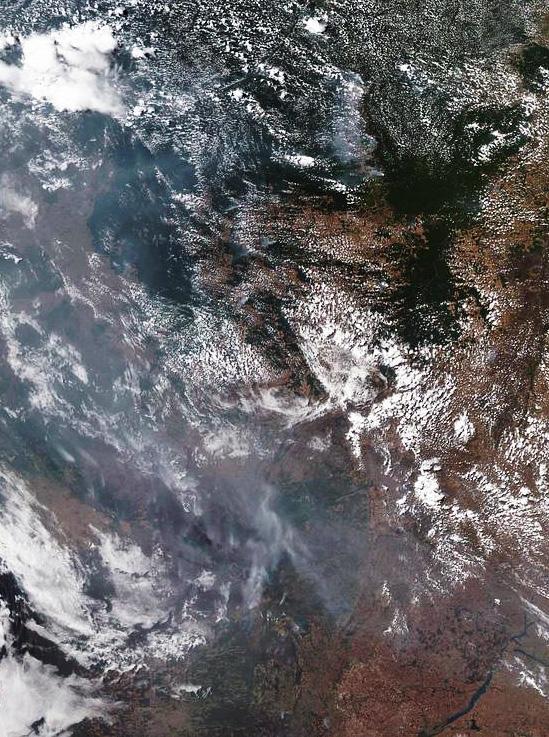
However, notwithstanding the deficiencies in land tenure and cattle movement data collection just identified, there is data that could be used to force greater cattle sector accountability. Public access, in readily usable formats, to two existing (if imperfect) datasets – one covering land tenure on the basis of self-declaration and the other covering transport of livestock – would greatly improve the transparency of Brazil’s cattle sector as well as the ability of law enforcement agencies, and of processors and their downstream customers, to monitor cattle supply chains and the impact of the sector, ultimately helping to ensure that meat production ceases to involve deforestation and human rights abuses:
• The Cadastro Ambiental Rural (CAR), or
Rural Land and Environmental Management
Registry: Self-reported registration of all rural properties (including identification of property boundaries) is mandatory in Brazil; however, not all property owners have complied. Additionally, the self-reported information is not legally verified, meaning that land claims may overlap with public, protected or Indigenous lands – as exemplified by the case of the Ituna-Itatá
Indigenous lands (reported on by Greenpeace
Brazil in 2020), which are covered virtually entirely by 223 CAR claims. 24 Further, the selfdeclared property boundaries may be revised to avoid liability for violations of the Forest Code (see page 35), which specifies the minimum proportion of natural vegetation that must be maintained within a property.
• Guias de Trânsito Animal (GTAs), or animal transportation records: The GTA is a mandatory transport record that must be filed every time a consignment of livestock is moved. It does not track individual animals, but rather individual consignments of cattle. The data the GTA contains is collected exclusively by the state sanitary agencies to enable traceability and so prevent the spread of foot-and-mouth and other animal diseases. A state sanitary agency generates a form with a unique seven-digit code for each consignment of animals (whether moved by truck or boat or by herding). The GTAs are recorded in databases managed by the state sanitary agencies and synchronised with a federal database. All consignments of cattle received by farms or slaughterhouses should be accompanied by a GTA. The data entered on the form includes the following: total number of animals in the consignment, number of animals of either sex and within different age ranges, purpose of transportation (slaughter, breeding, etc), origin and destination municipalities and properties, and vaccination status of the animals. 25
However, GTAs do not indicate whether the animals being transported originate from a farm other than the one that dispatched them (ie an indirect supplier), despite the fact that some or all of the cattle in a consignment may have spent part or most of their lives at other locations. Moreover, although GTAs are official documents, the public does not have straightforward and timely access to the entire GTA database. For example, on a case-by-case basis, certain states may eventually release a limited amount of historic data upon formal request, but even public prosecutors in certain Amazon states are unable to effectively access the data. 26 Processors also complain about their lack of comprehensive access to the data. According to the 2019 audit report of JBS, the country’s largest cattle processor: ‘the Company advised that the traceability of the cattle production chain, from birth to slaughter, is only possible with full access to all animal transportation records to identify the indirect supply chain. [...] JBS and other industry players are already in touch with the MAPA to obtain access to the GTA data base [...] but have had no success.’ 27
The value of full public access to these datasets would be further increased by the possibility of linking them to other already publicly accessible datasets such as the following:
• Environmental violations by, and embargoes on, farms: Brazil’s Institute of the Environment and Renewable Natural Resources (Instituto
Brasileiro do Meio Ambiente e dos Recursos
Naturais Renováveis; IBAMA) publishes a list of farms that have breached environmental legislation such as the Forest Code – eg by carrying out illegal deforestation – and that are prohibited (embargoed) from producing in a specified area of their land holding (which may comprise the whole farm or only part of it) until they regularise their situation, for example through payment of a fine and land restoration.
• Slave labour: The Ministry of Labour and
Employment (Ministério do Trabalho e Emprego;
MTE) publishes a ‘Dirty List’ of farms identified as using or having used slave labour or labour analogous to slavery. 28
• Indigenous lands, Conservation Units and other public lands: Maps of the locations of these areas are in the public domain.
• Data from deforestation monitoring systems:
There is publicly available data from systems such as DETER (a satellite-based system for realtime detection of deforestation) and PRODES (Programme for the Estimation of Deforestation in the Brazilian Amazon), along with MapBiomas and high-resolution satellite imagery.
• International trade data: Trade data is
provided by, for example, the Trase supply chain transparency initiative. 29
Such increased transparency has been called for by Brazil’s federal public prosecutors. In November 2015 the Federal Public Ministry (Ministério Público Federal; MPF) recommended that GTA data be made fully publicly available online by state sanitary agencies within 120 days. 30 After repeated formal requests from Greenpeace Brazil, for example, Instituto de Defesa Agropecuária do Estado de Mato Grosso (INDEA) officials in Mato Grosso released the data in 2015 – but this was a one-off event with no new data being made available, and no other state sanitary agencies complied.
In June 2020, the federal public prosecutor for Pará, together with senior staff from Imazon and the Igarapé Institute, proposed similar measures – importantly not requiring the support of the executive branch – in order to improve transparency and governance. 31 The proposal included the relevant authorities making publicly accessible a number of databases, including the CAR dataset, that would allow more detailed monitoring of compliance with environmental law.
In July 2020, a collection of international scientists published findings based on the CAR and GTA data for certain states in order to ‘explicitly link illegal deforestation on individual rural properties to their agricultural production and exports to EU countries’. 32 from Brazil to the EU may have been produced on illegally deforested land in the Amazon or the Cerrado. Within the states of Pará and Mato Grosso, in 2017, some 60% of cattle supplied to slaughterhouses came from rural properties suspected of engaging in illegal deforestation: in the case of a fifth of these cattle the direct supplier was suspected of deforestation, while for the remaining four-fifths it was an indirect supplier that was implicated. Mato Grosso is the third largest source of Brazilian beef imported into the EU. This study looked only at illegal deforestation – ie clearance in violation of Brazil’s Forest Code – but nevertheless it demonstrated how invaluable the CAR and GTA datasets could be as tools for monitoring the sector. For example, they could be used to identify farms directly involved in, as well as farms and processors linked to, expropriation of Indigenous lands, deforestation (illegal or otherwise), slave labour and use of fire to clear land.
Brazil’s constitution supports the principles that access to public information is a fundamental right and that disclosure of public interest information is an administrative duty. 33 Given the clear public interest value of the datasets described above – and the calls from scientists, public prosecutors and even processors like JBS to make them open and accessible – it is imperative that those that have the ability to do so act in the public interest and publish the data.
In terms of the global market, consumer companies and the financial sector need to make full supply chain transparency a condition of trade with or financial support for suppliers, requiring them to have open and comprehensive monitoring systems in place by no later than 1 January 2021. The limited success of the 2009 G4 Cattle Agreement brokered by Greenpeace Brazil underlines how vital such pressure, along with the publication of the official property and transportation data, will be to the goal of bringing transparency and accountability to the Brazilian beef sector in particular.




